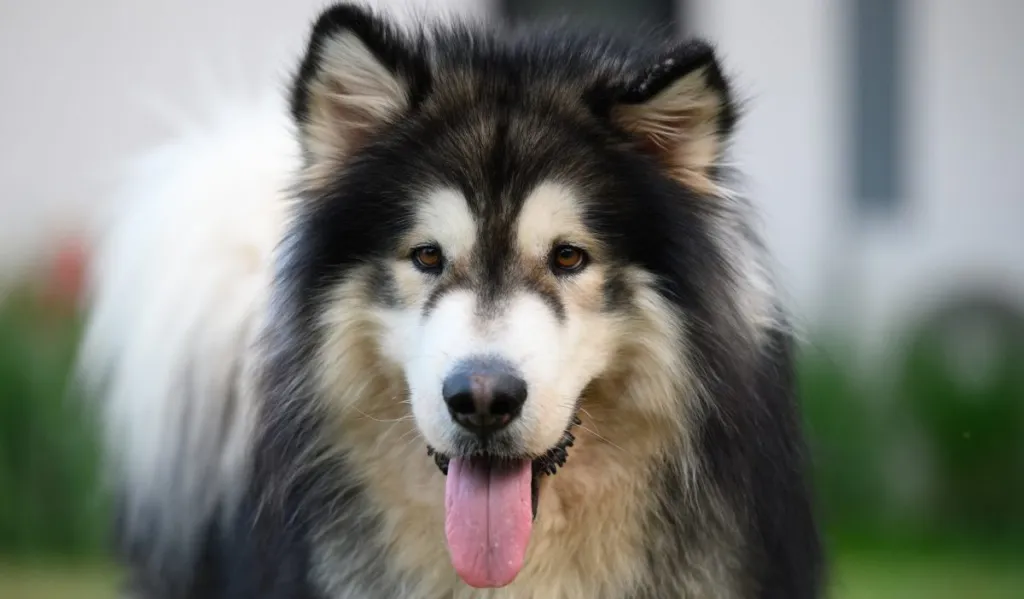The Alaskan Malamute originates from the rugged landscapes of Alaska, boasting incredible strength, endurance, and unwavering loyalty. Belonging to the Mahlemuts of Alaska, these dogs hold a significant place in the history of the Arctic. They thrived in cold climates, thanks to their thick coat. The double coat provides insulation against freezing temperatures and comes in various colors. This includes shades of gray, black, white, and copper.
Malamutes are large, robust dogs, designed for endurance. Initially bred to pull heavy sleds over extended distances, this breed assisted in hauling supplies and transportation tasks. This strong work ethic remains intrinsic, making regular exercise and mental stimulation vital to their well-being. Neglecting these needs can lead to a mischievous Malamute, so engaging activities and frequent outdoor adventures are imperative.
Remember that these dogs make wonderful companions, but they might not suit everyone due to their size, energy levels, and requirement for regular exercise. They are better suited for families with active lifestyles and sufficient space for them to roam.
Quick Facts
Alaskan Malamutes are large, powerful dogs with a reputation for being gentle giants. They are known for their loyalty, affection, and playful nature. However, they can also be independent and stubborn, and they require a lot of exercise and training.
- Origin: Alaska, United States
- Size: Large breed, males 25 inches tall at the shoulder and 85 pounds, females 23 inches tall and 75 pounds
- Breed group: Working dog
- Lifespan: 10-14 years
- Coat: Thick, double coat that comes in gray, black, white, and sable
- Temperament: Gentle giants, loyal, affectionate, playful, but can be independent and stubborn
- Exercise needs: High, at least 2 hours of exercise per day
- Training: Needs early and consistent training, can be stubborn
- Grooming: Moderate, requires brushing 2-3 times per week
- Health: Some health concerns include hip dysplasia, elbow dysplasia, eye problems, and bloat
- The titular role in “White Fang” was portrayed by Jed, a hybrid of Alaskan Malamute and Canadian timber wolf. Jed also starred as “Wolf” in The Journey of Natty Gann (1985).
- Alaskan Malamutes have been owned by notable individuals such as explorer Richard E. Byrd, baseball hall-of-famer Vida Blue, film director George Lucas, and actor/comedian Robin Williams.
If you are considering getting an Alaskan Malamute, it is important to be aware of their personality traits and exercise requirements. They are not a good choice for first-time dog owners or people who live in apartments or small homes. However, if you are looking for a loyal, affectionate, and playful companion, an Alaskan Malamute may be the perfect dog for you.
Alaskan Malamute Pictures

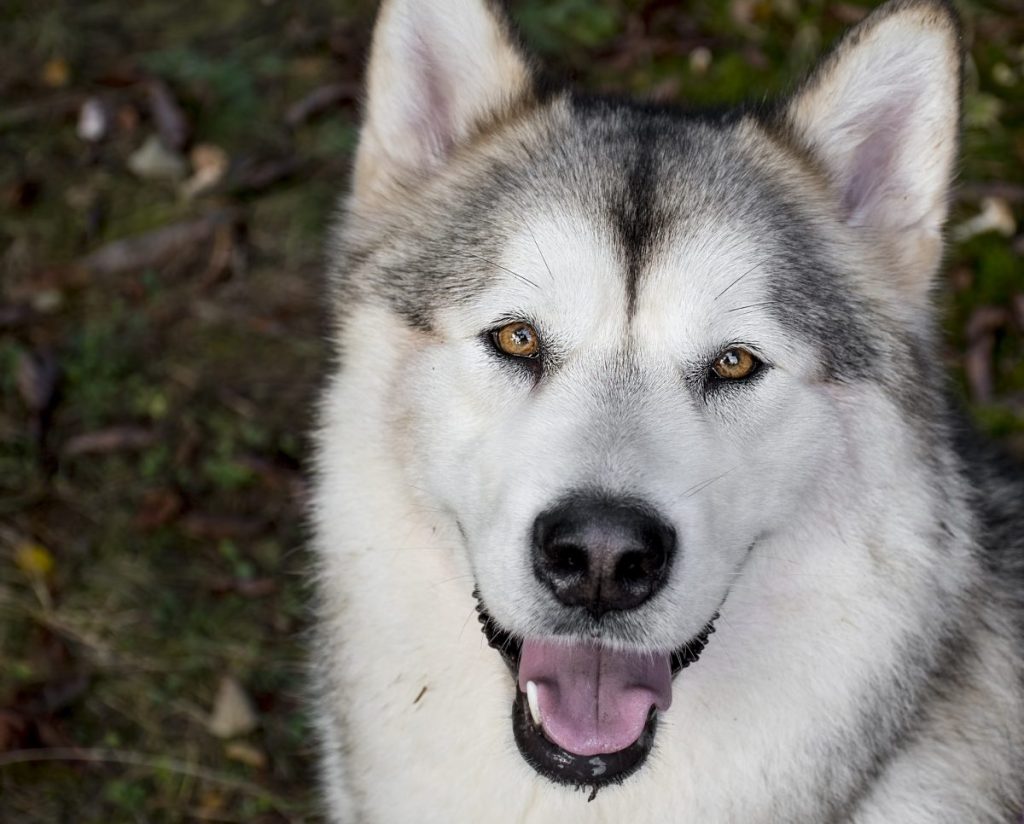
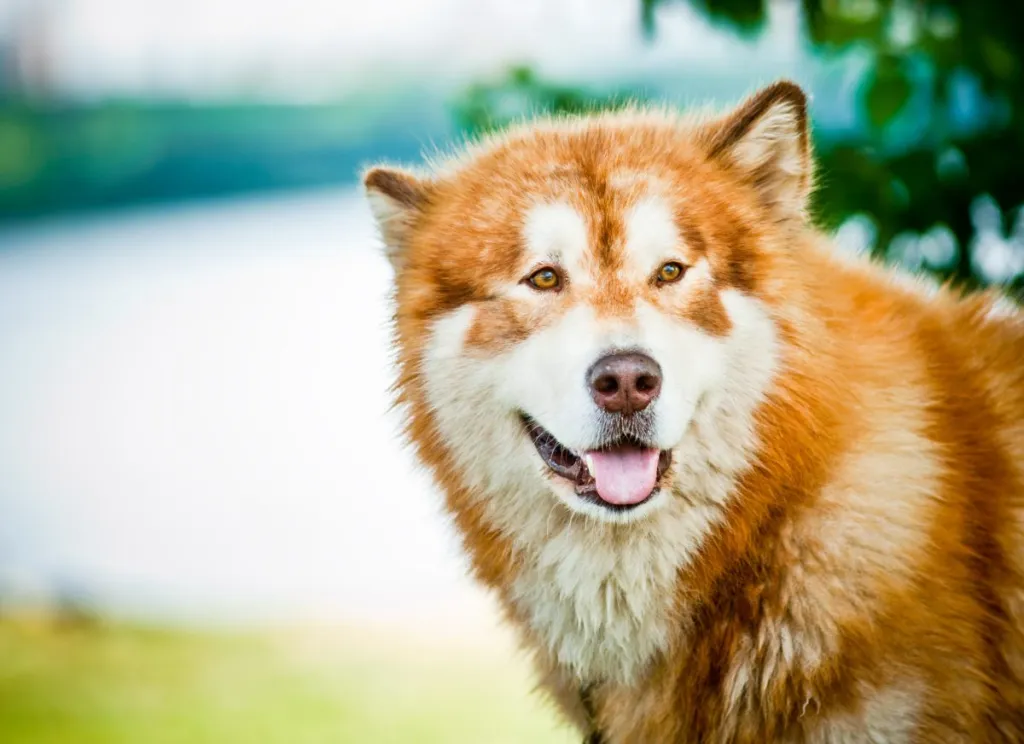
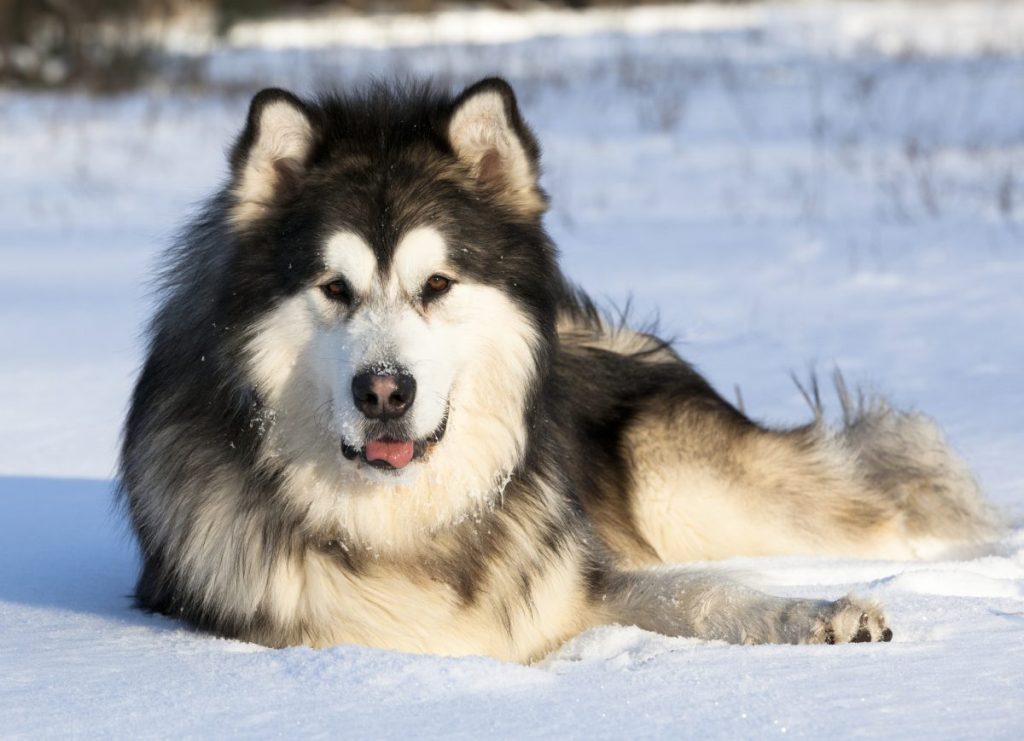
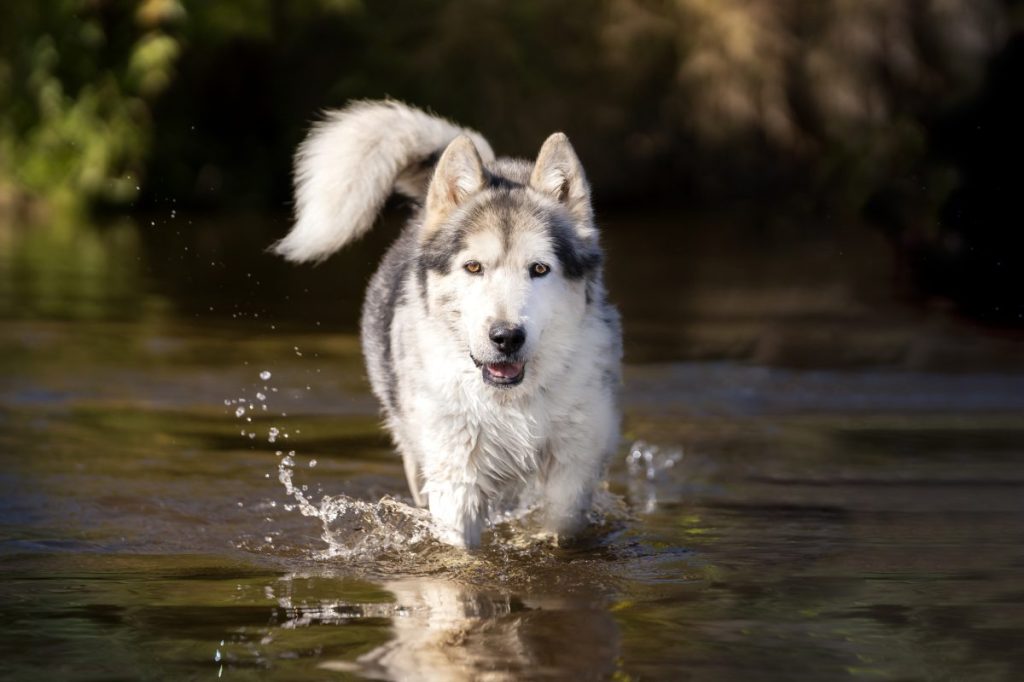
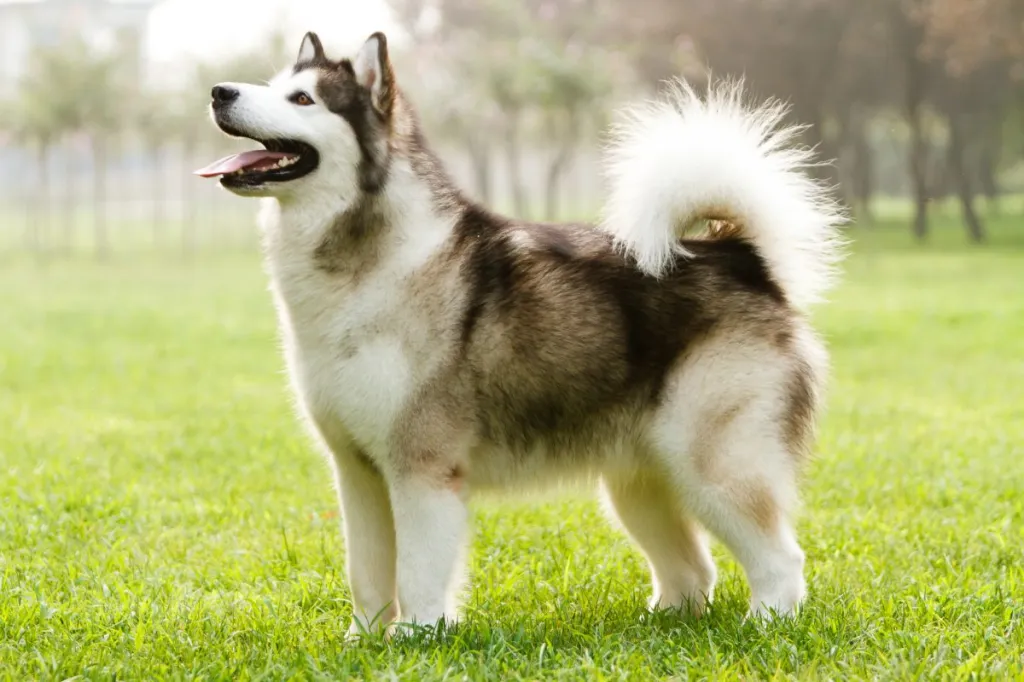
Adaptability
-
Adapts Well To Apartment Living
Looking for the best dog for your apartment? Contrary to popular belief, the suitability of dogs who adapt well to apartment living goes beyond its size. Apartment dwellers have a myriad of dog breeds to choose from as potential companions, with various factors to consider. Some large breeds can adapt well to apartment living and have lower activity levels. Others may require more space and possess higher energy levels. On the other hand, certain small dog breeds with abundant energy can still find contentment with indoor playtime or brisk walks.
However, when selecting a dog that adapts well apartments, it is essential to prioritize your neighbors. Opting for a pet that doesn’t excessively bark and behaves politely when encountering others in shared spaces like is crucial for maintaining a harmonious apartment environment.
In high-rise settings, it’s worth noting that numerous small dogs may exhibit a propensity for high energy and frequent barking. This makes them less suitable for apartment living. Therefore, desirable qualities in an apartment dog encompass being quiet, low-energy, and displaying polite behavior towards other residents.
Factors To Consider When Choosing A Dog For An Apartment
When considering dogs that adapt well to apartments, size alone should not be the sole determinant. Apartment dwellers have a wealth of dog breeds to choose from as potential furry companions. It’s important to remember that the size of your living space is just one factor to consider. While some larger breeds can adapt well to apartment living, with lower, others may require more space and have higher energy levels, making them less suitable for smaller apartments. Conversely, certain small dog breeds with higher energy levels can still thrive in apartments, finding contentment through indoor playtime or brisk walks. However, it is crucial to consider your neighbors’ comfort when selecting a dog. Opt for a pet that doesn’t bark excessively and behaves politely when interacting with others in shared spaces.
Therefore, it’s important to prioritize qualities such as being quiet, low-energy, calm indoors, and exhibiting good manners when living in close proximity to other residents. By considering these factors, you can find a dog that will adapt well to apartment living and create a harmonious living environment for everyone involved.
-
Good For Novice Owners
Some dogs are simply easier than others; they take to training better and are fairly easygoing. They’re also resilient enough to bounce back from your mistakes or inconsistencies.
Dogs who are highly sensitive, independent thinking, or assertive may be harder for a first-time dog parent to manage. You’ll get your best match if you take your dog-owning experience into account as you choose your new pooch.
If you’re new to dog parenting, take a look at 101 Dog Tricks and read up on how to train your dog!
-
Sensitivity Level
Some dogs will let a stern reprimand roll off their backs, while others take even a dirty look to heart. Low-sensitivity dogs, also called “easygoing,” “tolerant,” “resilient,” and even “thick-skinned,” can better handle a noisy, chaotic household, a louder or more assertive owner, and an inconsistent or variable routine. Do you have young kids, throw lots of dinner parties, play in a garage band, or lead a hectic life? Go with a low-sensitivity dog.
-
Tolerates Being Alone
Some breeds bond very closely with their family and are more prone to worry or even panic when left alone by their owner. An anxious dog can be very destructive–barking, whining, chewing, and otherwise causing mayhem. These breeds do best when a family member is home during the day or if you can take the dog to work.
-
Tolerates Cold Weather
Breeds with very short coats and little or no undercoat or body fat, such as Greyhounds, are vulnerable to the cold. Dogs with a low cold tolerance need to live inside in cool climates and should have a jacket or sweater for chilly walks. You can find a great jacket for your dog here!
-
Tolerates Hot Weather
Dogs with thick, double coats are more vulnerable to overheating. So are breeds with short noses, like Bulldogs or Pugs, since they can’t pant as well to cool themselves off. If you want a heat-sensitive breed, your dog will need to stay indoors with you on warm or humid days, and you’ll need to be extra cautious about exercising your dog in the heat.
All-around friendliness
-
Affectionate With Family
When it comes to unconditional love and unwavering loyalty, few animals can rival the affectionate nature of dogs. These remarkable creatures have earned their reputation as man’s best friend, and many breeds are particularly renowned for their love and devotion to their families. With their warm hearts and wagging tails, affectionate family dogs enrich the lives of their owners in countless ways.
One such breed known for its affectionate demeanor is the Golden Retriever. With their gentle temperament and friendly disposition, Golden Retrievers form deep bonds with their families. They eagerly participate in family activities, whether it’s a game of fetch in the yard or cuddling on the couch during a movie night. Their expressive eyes and ever-wagging tails are a testament to the joy they feel in the presence of their loved ones.
Another family-favorite breed is the Labrador Retriever. Renowned for their playful and patient nature, Labradors are excellent companions for children and adults alike. They readily engage in playtime with the kids, showcasing their boundless energy and enthusiasm. But when the day winds down, they seamlessly transition into loving and gentle cuddle buddies, comforting their family members with their warm presence.
Beyond specific breeds, mixed-breed dogs also have a special place in the hearts of families seeking affectionate companions. The shelter dogs, in particular, form deep connections with their adoptive families. They seem to understand the second chance they’ve been given and repay it with endless love and gratitude.
How To Know If A Dog Is Good With Families
The affectionate nature of family dogs extends beyond play and cuddles. Dogs have a remarkable ability to sense their owner’s emotions, offering comfort and support during difficult times. Whether it’s a wagging tail after a long day at work or a sympathetic nuzzle during moments of sadness, they prove time and again that they are attuned to their family’s needs.
It is important to note that not all dogs of the same breed will be equally affectionate. Some dogs may be more independent or aloof, while others may be more clingy or demanding of attention. The best way to find out how affectionate a dog is is to meet them in person and interact with them.
-
Kid-Friendly
Being gentle with children, sturdy enough to handle the heavy-handed pets and hugs they can dish out, and having a blasé attitude toward running, screaming children are all traits that make a kid-friendly dog. You may be surprised by who’s on that list: Fierce-looking Boxers are considered good with children, as are American Staffordshire Terriers (which are considered Pit Bulls). Small, delicate, and potentially snappy dogs such as Chihuahuas aren’t always so family-friendly.
**All dogs are individuals. Our ratings are generalizations, and they’re not a guarantee of how any breed or individual dog will behave. Dogs from any breed can be good with children based on their past experiences, training on how to get along with kids, and personality. No matter what the breed or breed type, all dogs have strong jaws, sharp pointy teeth, and may bite in stressful circumstances. Young children and dogs of any breed should always be supervised by an adult and never left alone together, period.
-
Dog Friendly
Friendliness toward dogs and friendliness toward humans are two completely different things. Some dogs may attack or try to dominate other dogs, even if they’re love-bugs with people; others would rather play than fight; and some will turn tail and run. Breed isn’t the only factor. Dogs who lived with their littermates and mother until at least six to eight weeks of age and who spent lots of time playing with other dogs during puppyhood, are more likely to have good canine social skills.
-
Friendly Toward Strangers
Stranger-friendly dogs will greet guests with wagging tails and nuzzles; others are shy, indifferent, or even aggressive. However, no matter what the breed, a dog who was socialized and exposed to lots of different types, ages, sizes, and shapes of people as a puppy will respond better to strangers as an adult. Remember that even friendly dogs should stay on a good, strong leash like this one in public!
Health And Grooming Needs
-
Amount Of Shedding
If you’re going to share your home with a dog, you’ll need to deal with some level of dog hair on your clothes and in your house. However, shedding does vary greatly among the breeds. Some dogs shed year-round, some “blow” seasonally, some do both, and some shed hardly at all. If you’re a neatnik, you’ll need to either pick a low-shedding breed or relax your standards. To help keep your home a little cleaner, you can find a great de-shedding tool here!
-
Drooling Potential
Drool-prone dogs may drape ropes of slobber on your arm and leave big, wet spots on your clothes when they come over to say hello. If you’ve got a laid-back attitude toward slobber, fine; but if you’re a neatnik, you may want to choose a dog who rates low in the drool department.
-
Easy To Groom
Some breeds are brush-and-go dogs; others require regular bathing, clipping, and other grooming just to stay clean and healthy. Consider whether you have the time and patience for a dog who needs a lot of grooming, or the money to pay someone else to do it.
-
General Health
Due to poor breeding practices, some breeds are prone to certain genetic health problems, such as hip dysplasia. This doesn’t mean that every dog of that breed will develop those diseases; it just means that they’re at an increased risk.
If you’re adopting a puppy, it’s a good idea to find out which genetic illnesses are common to the breed you’re interested in. You may also want to ask if your shelter or rescue has information about the physical health of your potential pup’s parents and other relatives.
-
Potential For Weight Gain
Some breeds have hearty appetites and tend to put on weight easily. As in humans, being overweight can cause health problems in dogs. If you pick a breed that’s prone to packing on pounds, you’ll need to limit treats, make sure they get enough exercise, and measure out their daily food servings into regular meals rather than leaving food out all the time.
Ask your vet about your dog’s diet and what they recommend for feeding your pooch to keep them at a healthy weight. Weight gain can lead to other health issues or worsen problems like arthritis.
-
Size
Get ready to meet the giants of the doggy world! Large dog breeds aren’t just big balls of fluff, they’re like loving, oversized teddy bears on a mission to steal your heart. Need some convincing? Let’s dive into the awesome benefits of owning one!
First things first, these pooches are a living security system! With their impressive size and thunderous barks, they’ll have any would-be intruder running for the hills. Talk about peace of mind! Plus, who needs an alarm when you’ve got a furry giant protecting your castle?
But that’s not all. Large dog breeds are all about loyalty and devotion. They’ll stick by your side through thick and thin, becoming your most dedicated bestie. Their love knows no bounds! When you have a giant fluffball showing you unconditional love, you’ll feel like the luckiest human on the planet.
Now, let’s talk about their talents. These big fellas are the ultimate working partners. With brains and brawn, they’re up for any challenge. From search and rescue missions to lending a helping paw to those in need, these dogs are superheroes in fur coats. They’ll make you proud every step of the way!
Don’t let their size fool you—these gentle giants have hearts as big as their paws. They’re incredible with kids and other pets, spreading their love like confetti. Their patience and kindness make them perfect family pets, ensuring harmony in your household.
Oh, and get ready to break a sweat! These dogs are fitness enthusiasts, and they’ll keep you on your toes. Daily walks, jogs, and play sessions will not only keep them happy and healthy but will also give you a reason to ditch the couch and join in on the fun. It’s a win-win situation!
So, if you’re ready for a dose of big love, go ahead and consider a large dog breed. They’re the best wing-dog you could ever ask for, ready to make your life a thousand times more exciting, loving, and downright awesome! Get ready for the big adventure of a lifetime!
Trainability
-
Easy To Train
Easy-to-train dogs are more adept at forming an association between a prompt (such as the word “sit”), an action (sitting), and a consequence (getting a treat) very quickly. Other dogs need more time, patience, and repetition during training.
Many breeds are intelligent but approach training with a “What’s in it for me?” attitude, in which case you’ll need to use rewards and games to teach them to want to comply with your requests.
Related:
10 Fun, Impressive Tricks You Can Teach Any Dog
-
Intelligence
Dogs who were bred for jobs that require decision making, intelligence, and concentration, such as herding livestock, need to exercise their brains, just as dogs who were bred to run all day need to exercise their bodies. If they don’t get the mental stimulation they need, they’ll make their own work–usually with projects you won’t like, such as digging and chewing. Obedience training and interactive dog toys are good ways to give a dog a brain workout, as are dog sports and careers, such as agility and search and rescue.
-
Potential For Mouthiness
Common in most breeds during puppyhood and in Retriever breeds at all ages, mouthiness means a tendency to nip, chew, and play-bite (a soft, fairly painless bite that doesn’t puncture the skin). Mouthy dogs are more likely to use their mouths to hold or “herd” their human family members, and they need training to learn that it’s fine to gnaw on chew toys, but not on people. Mouthy breeds tend to really enjoy a game of fetch, as well as a good chew on a toy that’s been stuffed with kibble and treats.
-
Prey Drive
Dogs with a high prey drive have an instinctive desire to stalk, capture, and prey upon potential food sources. Dogs who were bred to hunt, such as Terriers, have an inborn desire to chase — and sometimes kill — other animals. Anything whizzing by — such as cats, squirrels, and perhaps even cars — can trigger that instinct.
How to address a high prey drive
Off-leash adventures are too great a temptation for pups who will wander and hunt. Dogs who like to chase need to be leashed. And, even on a leash, you may experience your dog pulling on the leash to reach rodents or birds in their sight. Otherwise, these pups should be kept in a fenced area when outdoors. If your pup has a high prey drive, you’ll need a high, secure fence in your yard.
These breeds generally aren’t a good fit for homes with smaller pets that can look like prey, such as cats, hamsters, or small dogs. Breeds that were originally used for bird hunting, on the other hand, generally won’t chase, but you’ll probably have a hard time getting their attention when there are birds flying by.
Other behavioral concerns
Observing your dog’s prey drive, which is instinctual and biologically-rooted, is not the same as observing aggression. Much aggression is born of fear and anxiety, especially in the case of dog aggression toward humans.
The tendency to wander, even into oncoming traffic, can produce diasterious results for pups with predatory instincts. It can also lead to pups being bitten by snakes or attacked by other wild animals they may pursue while on the hunt.
-
Tendency To Bark Or Howl
Some breeds sound off more often than others. When choosing a breed, think about how often the dog vocalizes. Learn more about breeds with a tendency to bark or howl.
If you’re considering a hound, would you find their trademark howls musical or maddening? If you’re considering a watchdog, will a city full of suspicious “strangers” put your pup on permanent alert? Will the local wildlife literally drive your dog wild? Do you live in housing with noise restrictions? Do you have neighbors nearby? Then you may wish to choose a quieter dog.
-
Wanderlust Potential
Some breeds are more free-spirited than others. Nordic dogs such as Siberian Huskies were bred to range long distances, and given the chance, they’ll take off after anything that catches their interest. And many hounds simply must follow their noses–or that bunny that just ran across the path–even if it means leaving you behind.
Exercise needs
-
Energy Level
High-energy dogs are always ready and waiting for action. Originally bred to perform a canine job of some sort, such as retrieving game for hunters or herding livestock, they have the stamina to put in a full workday. They need a significant amount of exercise and mental stimulation, and they’re more likely to spend time jumping, playing, and investigating any new sights and smells.
Low-energy dogs are the canine equivalent of a couch potato, content to doze the day away. When picking a breed, consider your own activity level and lifestyle, and think about whether you’ll find a frisky, energetic dog invigorating or annoying.
-
Intensity
A vigorous dog may or may not have high energy, but everything they do, they do with vigor: they strain on the leash (until you train them not to), try to plow through obstacles, and even eats and drinks with great big gulps. These dynamos need lots of training to learn good manners, and may not be the best fit for a home with young kids or someone who’s elderly or frail. A low-vigor dog, on the other hand, has a more subdued approach to life.
-
Exercise Needs
Some breeds do fine with a slow evening stroll around the block. Others need daily, vigorous exercise, especially those that were originally bred for physically demanding jobs, like herding or hunting.
Without enough exercise, these breeds may put on weight and vent their pent-up energy in ways you don’t like, such as barking, chewing, and digging. Breeds that need a lot of exercise are good for outdoorsy, active people, or those interested in training their dog to compete in a high-energy dog sport, such as agility.
-
Potential For Playfulness
Some dogs are perpetual puppies — always begging for a game — while others are more serious and sedate. Although a playful pup sounds endearing, consider how many games of fetch or tag you want to play each day, and whether you have kids or other dogs who can stand in as playmates for the dog.
Alaskan Malamute Overview
Upon encountering an Alaskan Malamute, one is immediately struck by its impressive size, wolf-like facial markings, and the majestic plumed tail that greets you. Although they might resemble wolves, these dogs are entirely domestic, despite any on-screen wolf roles they may play. The Alaskan Malamute boasts great strength, energy, endurance, independence, and intelligence. Initially bred for heavy sled pulling and even hunting seals and polar bears, they now excel in various dog sports, from conformation and obedience to weight pulling, skijoring, backpacking, and recreational sledding.
When not engaging in their characteristic “woo woo” vocalizations, accompanying your inline skating sessions, or sharing TV time, they might be exploring the trash, scouting for treats on kitchen counters, or digging cool holes in the yard. Inherently friendly, Malamutes see everyone as a friend, making them unsuitable watchdogs; their size alone may deter intruders, but that’s the extent of their protective nature. Alaskan Malamutes thrive in spacious environments with ample exercise opportunities to stave off boredom and restlessness. Their independent streak sometimes leads to misconceptions of stubbornness, but with proper training, their intelligence shines through. If the Alaskan Malamute fits your lifestyle, they offer years of active companionship, retaining their youthful enthusiasm well into adulthood.
Alaskan Malamute Highlights
- Not recommended for first time dog owners. Alaskan Malamutes are intelligent dogs, but they can be stubborn and challenging to train. They are not a good choice for first time dog owners who may not have the experience or patience to deal with their strong personality.
- Will challenge for top position in the household. Alaskan Malamutes are pack animals and they need to know who is the leader. If they do not know who is in charge, they will try to take over. It is important to establish yourself as the alpha from the start and to be consistent with your training.
- Majestic, thick coats. Alaskan Malamutes have a thick double coat that helps them stay warm in cold weather. However, this coat also makes them prone to overheating in hot weather. If you live in a warm climate, you will need to take steps to keep your Malamute cool, such as providing them with shade and plenty of water.
- Notorious Diggers. Alaskan Malamutes are intelligent, active dogs and they need plenty of exercise. Without mental and physical stimulation, can become destructive from boredom.
- High prey drive. Alaskan Malamutes have a high prey drive, which means they are naturally inclined to chase and kill small animals. If you have other pets, you will need to take steps to introduce them to your Malamute slowly and carefully.
- Shed heavily twice a year. Alaskan Malamutes shed heavily twice a year. During this time, you will need to brush them regularly to remove the loose hair.
- Rarely bark. Alaskan Malamutes are generally quiet dogs and they do not bark very often. However, they may howl or make other vocalizations to communicate with you.
- Get a dog from a shelter or rescue. There are many Alaskan Malamutes in shelters and rescues across the country. These dogs are often just as loving and loyal as dogs from breeders, but they come at a fraction of the cost. When you adopt a dog from a shelter or rescue, you are also giving them a second chance at a happy life.
Alaskan Malamute History
The Alaskan Malamute, one of the oldest Arctic sled dog breeds, traces its roots back to native peoples who migrated from Siberia to Alaska across the land bridge thousands of years ago. The Mahlemuts, settling in the northeastern Seward Peninsula, played a crucial role in developing this breed, utilizing the dogs for seal hunting, polar bear deterrence, and hauling heavy sleds laden with essentials. These indigenous tribes cherished their canine companions, but the gold rush of 1896 introduced diverse dogs capable of withstanding the Alaskan climate, leading to interbreeding and loss of purity. The isolated nature of the Mahlemuts aided the survival of the Alaskan Malamute despite this incursion. Arthur T. Walden’s Chinook Kennel in New Hampshire initiated breeding efforts, supplying dogs for Byrd’s Antarctic expeditions, with the “Kotzebue” strain originating from the Norton Sound area, and the “M’Loot” strain cultivated by Paul Voelker, Sr. during the early 1900s. The Alaskan Malamute Club of America formed in 1935, and the American Kennel Club recognized the breed that same year. World War II saw many registered Malamutes deployed for war duty, unfortunately leading to the destruction of numerous dogs after serving during the Antarctica expedition. Present-day AKC-registered Malamutes can trace their lineage back to the original Kotzebues or dogs registered during the late 1940s open period.
Alaskan Malamute Size
Male Alaskan Malamutes typically reach a height of 25 inches at the shoulder and weigh around 85 pounds, while females are generally around 23 inches tall and weigh approximately 75 pounds. However, it’s worth noting that a well-built adult can sometimes exceed 100 pounds. In rare cases, there are “giant” versions that surpass 140 pounds, although the Malamute’s body isn’t naturally suited to bear excessive weight.
Alaskan Malamute Personality
Alaskan Malamutes effortlessly win hearts with their playful and friendly nature, viewing everyone, including strangers and first-time visitors, as friends—this, however, makes them less suitable as watchdogs. Their loyalty to family and friends is unwavering, as they thrive on being an integral part of their human pack, eagerly joining in all family activities. While not overly prone to barking, they’re known for their distinctive “woo woo” howl. A Malamute’s temperament is influenced by factors like genetics, training, and socialization. Puppies with pleasant dispositions exhibit curiosity and playfulness, approaching people willingly. Opting for a balanced middle-ground puppy, avoiding overly dominant or excessively timid ones, is often a wise choice. Meeting a dog before adoption is essential to ensure a temperament that aligns with your comfort. If possible, observing siblings or other relatives of the pup’s parents can offer insights into its future behavior. Socialization, a crucial aspect for all dogs, should start early, exposing the Malamute to diverse people, environments, and experiences during their formative years. Enrolling them in a puppy kindergarten class serves as a fantastic beginning. Regularly inviting visitors, visits to dog-friendly parks and stores, and leisurely strolls to meet neighbors contribute to their well-rounded social skills development.
Alaskan Malamute Health
Alaskan Malamutes are generally healthy dogs, but they are prone to certain health conditions. Some of the most common health conditions in Alaskan Malamutes include:
- Cataracts: Cataracts are a clouding of the lens of the eye that can cause blindness. Malamutes are prone to developing juvenile cataracts, which usually appear between 1 and 2 years of age.
- Chondrodysplasia: Chondrodysplasia is a genetic disorder that causes dwarfism in dogs. Malamutes with chondrodysplasia may have short legs, bowed legs, or other skeletal deformities.
- Hip dysplasia: Hip dysplasia is a heritable condition in which the thighbone doesn’t fit snugly into the hip joint. Malamutes with hip dysplasia may experience pain, lameness, and arthritis.
- Hypothyroidism: Hypothyroidism is a condition that occurs when the thyroid gland doesn’t produce enough thyroid hormone. Malamutes with hypothyroidism may have a dry coat, weight gain, and hair loss.
- Hemeralopia (day blindness): Hemeralopia is a condition that causes dogs to be more sensitive to light. Malamutes with hemeralopia may have difficulty seeing in bright sunlight.
- Polyneuropathy: the Canine Health Center suggests testing for polyneuropathy, a genetic disorder affecting the nervous system in canines.
It is important to be aware of these health conditions if you are considering getting an Alaskan Malamute. You can help reduce your dog’s risk of developing these conditions by getting them from a reputable breeder who screens their dogs for health problems. You should also take your dog to the veterinarian for regular checkups so that any health problems can be detected early and treated promptly.
Alaskan Malamute Care
Alaskan Malamutes are working dogs that need a lot of exercise. They thrive on long walks, hikes, skijoring, carting, and sledding. They also need plenty of space to run and play. If they do not get enough exercise, they can become bored and destructive.
Here are some tips for exercising and caring for an Alaskan Malamute:
- Provide plenty of exercise: Alaskan Malamutes need at least two hours of exercise per day. This can be a mix of walking, running, playing fetch, and other activities.
- Accommodate their digging behavior: Malamutes love to dig. If you don’t want them digging up your yard, give them a designated area to dig, such as a sandbox or a large planter.
- Provide adequate shelter: While Alaskan Malamutes are fond of the cold and have a thick double coat that helps them stay warm, it is still essential to provide shelter and access to the indoors.
- Fencing: Alaskan Malamutes are escape artists. If you have a fence, make sure it is tall and sturdy. Additionally, be sure to microchip your pet!
- Housetraining: Alaskan Malamutes are generally easy to housetrain. However, they may have accidents if they are not exercised enough.
- Heat sensitivity: Alaskan Malamutes are not well-suited for hot weather. If you live in a warm climate, be sure to provide them with plenty of shade, fresh water, and air conditioning.
- Obedience training: Alaskan Malamutes are intelligent dogs that need early obedience training. This will help them learn basic commands and how to behave in a household setting.
With proper care and exercise, Alaskan Malamutes can make wonderful companions. They are loyal, affectionate, and playful dogs that will bring you years of joy.
Alaskan Malamute Feeding
Crafting an appropriate diet for an Alaskan Malamute, given its large size and substantial energy requirements, is essential. To ensure the right feeding plan and portion sizes, consulting a veterinarian or professional nutritionist is highly recommended. Keep in mind that their dietary needs evolve as they transition from puppyhood to adulthood and eventually reach their senior years. Staying vigilant and staying informed about these changing nutritional demands is crucial for their overall well-being.
Alaskan Malamute Coat Color And Grooming
Alaskan Malamutes have a thick double coat that requires regular grooming. The outer coat is thick and coarse, while the undercoat is soft and woolly. Malamutes shed heavily twice a year, so it is important to brush them regularly to remove loose hair.
Here are some tips for grooming an Alaskan Malamute:
- Brush your Malamute one to three times per week with a slicker brush or undercoat rake. This will help to keep the coat clean and distribute skin oils.
- During the shedding season, brush your Malamute more frequently to help control the hair loss.
- Bathe your Malamute only when necessary, as frequent bathing can dry out the skin.
- Brush your Malamute’s teeth two or three times per week to remove tartar buildup and prevent gum disease.
- Trim your Malamute’s nails once or twice a month to prevent them from becoming overgrown and painful.
- Check your Malamute’s ears weekly for redness or a bad odor, which can indicate an infection.
- If you are not experienced trimming your Malamute’s nails or cleaning their ears, it is best to ask a veterinarian or groomer for help.
It is important to start grooming your Malamute when they are a puppy so that they get used to the process. Make grooming a positive experience by giving your Malamute treats and praise.
By following these grooming tips, you can help keep your Alaskan Malamute looking and feeling their best.
Alaskan Malamute Children And Other Pets
Malamutes generally exhibit patience and affection towards children, relishing the attention they receive. However, it’s crucial to recognize that lively, rapidly growing Alaskan Malamute puppies can inadvertently overpower young children below the age of five, potentially causing them to be knocked over. Ensuring that children are educated in the proper approach and touch techniques when interacting with dogs is paramount. Supervision is imperative during any interactions between dogs and young children, preventing any accidental biting, ear or tail pulling, from either side. Teach children not to disturb a dog while it’s eating or sleeping, and never attempt to take away the dog’s food. No dog should be left alone with a child. Early socialization and training can lead to harmonious interactions between your Malamute and other dogs, although they may instinctively chase small animals such as cats unless accustomed to them and trained otherwise. Introducing them properly to other household animals and closely monitoring their interactions is vital, especially when dealing with outdoor cats and smaller animals, as Malamutes may perceive them as fair game.
Alaskan Malamute Rescue Groups
Malamutes are often purchased without any clear understanding of what goes into owning one. There are many Malamutes in need of adoption and or fostering and a number of rescues that we have not listed. If you don’t see a rescue listed for your area, contact the national breed club or a local breed club and they can point you toward a Malamute rescue.
Alaskan Malamute Breed Organizations
Finding a reputable dog breeder is one of the most important decisions you will make when bringing a new dog into your life. Reputable breeders are committed to breeding healthy, well-socialized puppies that will make great companions. They will screen their breeding stock for health problems, socialize their puppies from a young age, and provide you with lifetime support.
On the other hand, backyard breeders are more interested in making a profit than in producing healthy, well-adjusted dogs. They may not screen their breeding stock for health problems, and they may not socialize their puppies properly. As a result, puppies from backyard breeders are more likely to have health problems and behavioral issues.
